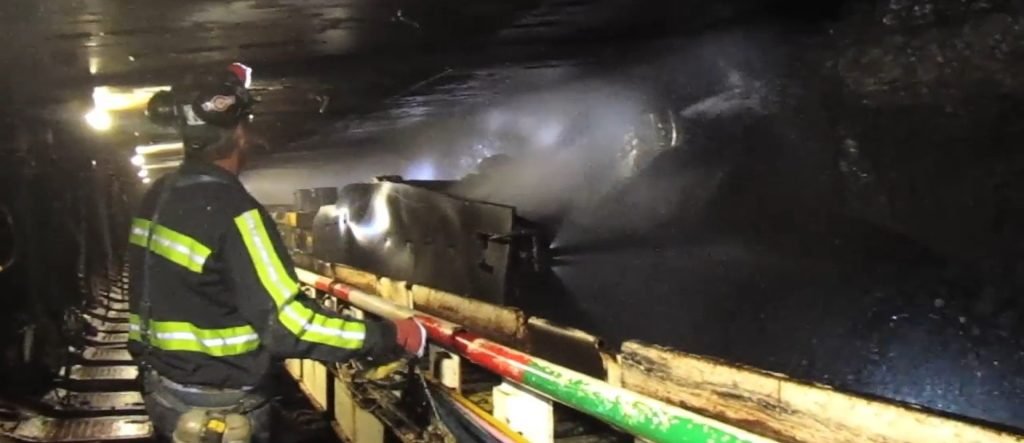Is it time to make coal great again? perhaps.
“Coal is cheap and it’s much less profitable to export it than to burn it domestically. So let’s burn it here.” Steve MilloyHe is a veteran observer of the energy industry and was part of the Environmental Protection Agency (EPA) transition team in the first Trump administration. “This will provide an abundant supply of affordable, reliable power and foster the long-term prosperity of coal regions.” (Related: John Stossel: Politicians always want to do more… with your money)
The U.S. coal industry has been in decline for a long time, at least since the regulatory “war on coal” launched by President Barack Obama 15 years ago. At the same time, new hydraulic fracturing technologies have lowered the price of natural gas, making it more competitive with coal as a fuel for power plants.
In Pennsylvania, where both fuels are abundant, natural gas has largely replaced coal for power generation. From 2001 to 2021, the share of gas in power generation rose from 2% to 52%, while coal fell from 57% to 12%. U.S. Energy Information Administration. Last year, Pennsylvania’s largest coal-fired power plant closed under regulatory and economic pressure after spending nearly $1 billion to fight pollution over the past decade.
nationwideBetween 2013 and 2023, domestic coal production declined by more than 30% and industry employment by more than 40%.
While the first Trump administration provided some respite from federal hostility toward fossil fuels in general and coal in particular, President Joe Biden has announced a shift toward more hydrocarbons while promoting weather-dependent wind and solar energy. It brought back Obama’s vicious negativity. This absurdity has destroyed lives and made power grids prone to blackouts.
Fortunately, the second Trump administration will become exponentially friendlier to fossil fuel development. High on the list is increasing exports of liquefied natural gas (LNG). “[T]The next four years could see a golden age for the liquefied natural gas (LNG) market, says market analyst. Rystad Energy. “[T]Policies expected by a reelected president are likely to accelerate the expansion of U.S. LNG infrastructure through deregulation and faster permitting…
All of this is consistent with Milloy’s energy policy formulation. We should export gas to “Europe and Asia, places where we can export it for six times the price we sell it for in the United States.” Milloy saysPublisher of junkscience.com He is the author of books on overregulation, fear-mongering, and corruption. “Let’s restart idle coal-fired power plants and build new coal-fired power plants…”
As hopes grow that regulatory obstacles to natural gas will ease, so too do hopes that coal can clear difficult environmental hurdles set by “green” enthusiasts.
First, the obnoxiously unreasonable EPA rule that defines carbon dioxide, a byproduct of combustion, as a pollutant will be thrown into the trash can of destructive policy as common sense and honest science are re-established among regulators. Doomed.
Additionally, clean coal technology ensures that the fuel burns cleanly. China and India There are over 100 ultra-supercritical coal-fired power plants that utilize high pressures and temperatures to achieve exceptional efficiency and minimize pollution. But there is only one such facility in the United States, which invented the technology more than a decade ago. John W. Turk Factory located in Arkansas.
Importantly, the United States is underutilizing both coal and the technologies best suited to use it. At current consumption rates, this country 250 billion tons Recoverable coal can be used for more than 200 years.
So if more natural gas ends up being exported as LNG at higher prices, isn’t coal an economical and logical alternative?
Nuclear power is another possibility, but not for a while. Even with an impact development program and sufficient political will, it will likely take decades to deploy enough nuclear reactors to supply most of the country’s electricity load. Barriers range from the need to sort out competing nuclear technologies, to regulatory inertia if not fraud, to multibillion-dollar funding needs and a lack of qualified engineers.
The last large U.S. nuclear reactors in operation – Georgia Power’s Units 3 and 4 Vogl The plant – took more than a decade to build and was $17 billion over budget.
“Although the regulatory environment has improved, costs are still too high and approval of new reactors takes too long,” the longtime nuclear enthusiast wrote. robert bryce.
Is there anyone who can say “Dig, baby, dig”?
Gordon Tomb is a senior advisor to CO.2 Union, and also worked as a coal truck driver in Fairfax, Virginia.
The views and opinions expressed in this commentary are those of the author and do not reflect the official position of the Daily Caller News Foundation.
All content produced by the Daily Caller News Foundation, an independent, nonpartisan news distribution service, is available free of charge to legitimate news publishers with large audiences. All republished articles must include our logo, reporter byline, and DCNF affiliation. If you have any questions about our guidelines or our partnership, please contact us at licensing@dailycallernewsfoundation.org.
















